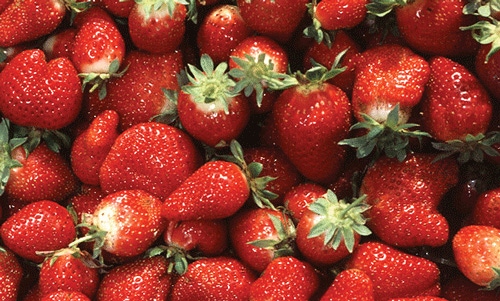September 9, 2010

In North Carolina, when many people think agriculture, they still think tobacco. Tobacco remains a significant crop, but acreage has declined and North Carolina farmers continue to diversify their operations.
Vegetable and small fruit crops are increasingly lucrative choices, but making the transition from traditional row crops can be difficult and often involves learning entirely new methods of production.
John Blue of Highlanders Farm in Carthage has met this challenge with success. Blue, who has grown tobacco his entire life, began transitioning to other crops in 2000 by planting cantaloupes on plastic-covered rows. He expanded his operation each year, gradually adding more and more crops, including strawberries, sprite melons, Japanese eggplant and bok choy. In addition to operating a roadside market on the farm, he and four other growers are the major suppliers for the newly formed Sandhills-Farm-to-Table Co-op.
This year Blue is trying out an entirely new crop and production method: Greenhouse tomatoes. He began by consulting with David Dycus of the North Carolina Department of Agriculture and Consumer Services Agronomic Division on topics such as growing plants in pinebark instead of soil, installing trellises and setting up a nutrient solution delivery system. After studying the process for a couple of years, he thought he was ready to give it a try.
“Ignorance was bliss at first,” Blue said. “I thought that in a greenhouse environment everything would be under control. I expected using a nutrient solution would be like following a recipe. It didn’t go quite that smoothly, and I’m glad I didn’t wait four or five weeks to get help when I started noticing problems.”
Recognized problem early
Recognizing a problem quickly allowed Blue to seek help correcting it.
“Growing a greenhouse crop requires more management than a field crop,” Dycus said, “but there are several tools available to make the management process easier. One of the most important ones involves submitting samples of the nutrient solution for a test known as solution analysis. Test results can indicate whether a nutrient solution has been mixed correctly. So my first recommendation to John was that we double-check the concentration of the solution.”
Blue had mixed his nutrient solution according to a prescribed “recipe,” but the recipe was based on the assumption of using a standard 30-gallon drum. As it turns out, Blue’s nutrient solution barrels were closer to 50 gallons, and test results clearly showed that levels of all desired nutrients were much too low.
Dycus helped Blue correct the nutrient concentration. They discussed how to make the appropriate dilutions and how to manage both the quantity and frequency of nutrient delivery. Dycus explained how to read a solution report and use it as a guide to making adjustments in the fertility program.
“The nutrient solution sample was one of the things that really helped me the most,” Blue said. “I got test results in a couple of days, made adjustments to the nutrient solutions right away and saw a difference in the crop a day or two later. I had used agronomic testing services for years, but this was a test I hadn’t had much experience with.”
Like many growers, Blue has found that using these services just makes sense.
“Growers can have a lot of money tied up in a greenhouse tomato crop,” Dycus said. “Using tests like solution and tissue analysis to monitor nutrient status helps protect this investment.”
Fertilization of greenhouse tomatoes is a balancing act. The crop gets a complete fertilizer one day and a calcium nitrate solution the next day. The complete fertilizer contains nitrogen, phosphorus and potassium. The calcium solution is added separately so it will not combine with phosphorus and potentially clog emitter nozzles.
Nitrogen and potassium fertilization must also be monitored closely. Tomatoes tend to take up nitrogen more easily than potassium, and once a crop’s potassium levels get too low, it is hard to correct the situation. Growers who submit tissue samples every two weeks know exactly what their crop needs and when.
“John is right on track when it comes to tissue sampling,” Dycus said. “He has years of experience using it with his other crops so it was only natural to use it in the greenhouse situation as well. Tissue reports helped him monitor potassium levels and head off a zinc deficiency.”
The NCDA&CS Agronomic Division has 13 regional agronomists who can make on-site visits, evaluate suspected nutrient problems and give advice on collecting and submitting agronomic samples, understanding test results, liming, fertilization, composting, irrigation and nematode management. To contact the agronomist assigned to your area, visit www.ncagr.gov/agronomi/rahome.htm.
You May Also Like




